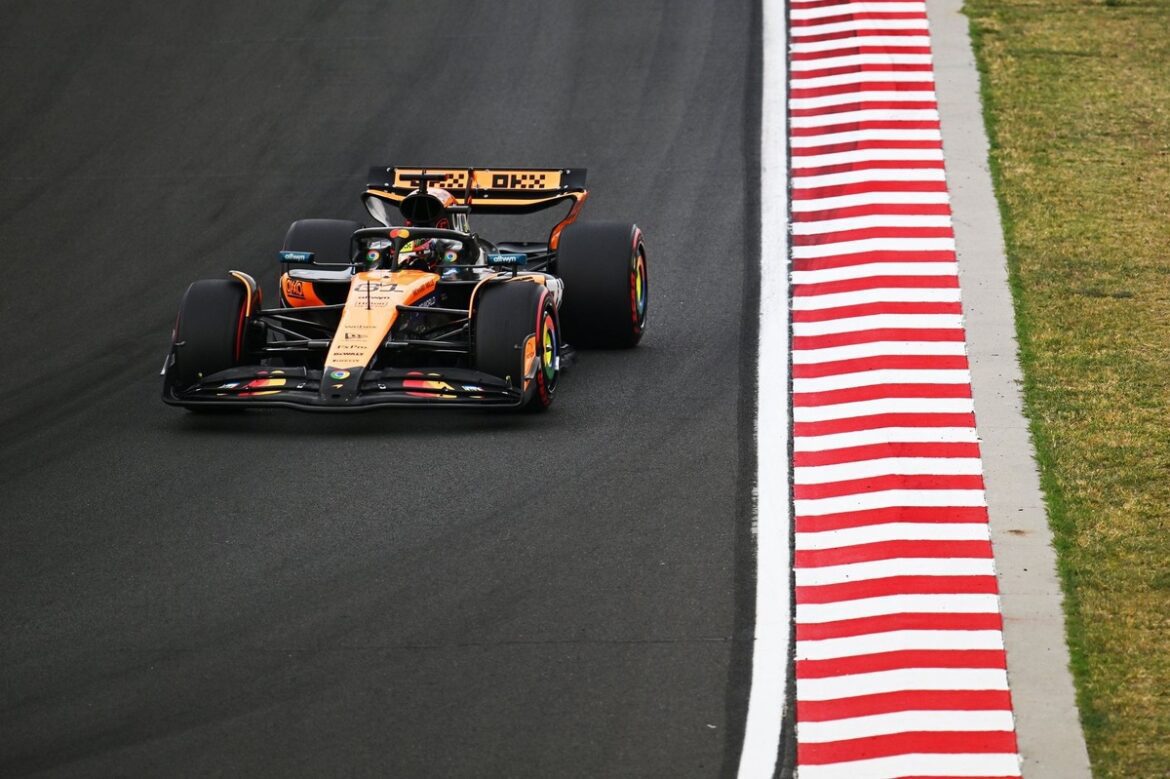Understanding the Intricacies of Qualifying at the Hungarian Grand Prix
The Hungarian Grand Prix is renowned for its unique circuit layout, characterized by a series of medium-speed corners that heavily rely on downforce. As teams prepared for qualifying, there was a prevailing expectation that McLaren, with their competitive edge, would secure a strong pole position. However, the outcome proved to be quite different from what many anticipated.
The Initial Stages of Qualifying
During the initial stages of qualifying, the performance of the McLaren drivers, Lando Norris and Oscar Piastri, appeared promising. Norris was leading Piastri by a narrow margin of just 0.05 seconds, while Lance Stroll from Aston Martin was impressively positioned in third. Both McLaren cars were the only ones to clock times under the 1:15 mark, showcasing their speed and efficiency. In contrast, Charles Leclerc, who would eventually claim pole position, lagged behind in sixth with a time of 1:15.6, nearly six-tenths off the pace set by the McLarens.
As the qualifying session progressed, external factors began to play a crucial role. Track and air temperatures dropped, but the most significant influence came from a sudden shift in wind direction. This 90-degree change coincided with the start of Q3, leading to increased average wind speeds and intensified gusts, which would dramatically affect the car performances on the track.
Impact of Changing Conditions
The effects of the changing conditions were clearly visible in the telemetry data. Drivers found themselves slower on the main straight, with speeds dropping by as much as 5 to 8 km/h. This alteration meant that the already challenging circuit became even more difficult to navigate, as the crosswind transformed into a headwind that each car had to contend with.
Consequently, the overall lap times during Q3 were slower than those recorded in Q2. Remarkably, Leclerc was the only driver among the ten who managed to improve his time, a feat that could largely be attributed to a significant mistake he made during Q2. While Leclerc’s ability to adapt to the changing conditions was commendable, it was evident that the McLaren team struggled considerably more than their competitors in Q3.
The McLaren Perspective
Andrea Stella, the team principal at McLaren, provided insights into the struggles faced during Q3. He noted that while some of the time lost could be attributed to Norris and Piastri being more cautious than Leclerc, a substantial portion—approximately four-tenths—was directly related to the car’s performance under the new conditions. This discrepancy in performance highlighted why both drivers experienced a similar loss in lap time.
Stella explained that the changes in conditions were not random; rather, they had a systematic impact on the team’s performance. He indicated that certain corners were particularly sensitive to the wind direction, which resulted in the McLaren cars losing more time compared to their performance in Q2. This phenomenon was especially pronounced in the final corners of the circuit.
Analyzing the Performance Loss
The telemetry data revealed critical details about the performance loss experienced by McLaren drivers. The combined 0.250 seconds lost by Norris and Piastri in Turns 13 and 14 of the Hungaroring suggested a heightened sensitivity of their MCL39 car to crosswinds. In particular, the headwind encountered during the turn-in phase of Turn 13 caused significant corrections in steering for both drivers, complicating their ability to maintain speed through the corner.
As the circuit transitioned into Turn 14, the dynamics shifted to a tailwind, which then turned into a headwind. This scenario further complicated the drivers’ ability to maintain optimal speed and control. Additionally, they lost time in Turn 11, which also became a crosswind corner, compounding their challenges.
The slower exit speeds from Turn 14 subsequently impacted their performance on the straight, contributing to a time loss of approximately 0.150 seconds compared to their direct rivals. This series of challenges painted a clear picture of how external conditions could drastically alter the performance dynamics on the track.
Understanding Wind Sensitivity
The situation raised questions about the extent to which wind direction and intensity influenced McLaren’s performance. While the team acknowledged the role of aerodynamic forces in determining lap times, they also recognized the specific vulnerabilities of their car design. Stella hinted at a pronounced wind sensitivity that had become evident at the Hungaroring, emphasizing the importance of understanding how these factors interact with the car’s performance.
Despite the challenges presented by the changing conditions, Stella remained optimistic about the team’s potential to compete effectively in the race. He expressed confidence that the McLaren cars could showcase their full pace, irrespective of the weather conditions, including the possibility of rain on race day.
Conclusion
The qualifying session for the Hungarian Grand Prix served as a vivid illustration of the complexities involved in Formula 1 racing. The interplay between driver skill, car performance, and environmental factors can lead to unexpected results, as evidenced by the McLaren drivers’ experiences. Understanding these dynamics is crucial for teams as they prepare for future races, particularly in a sport where precision and adaptability are paramount.
As the season progresses, the lessons learned from this qualifying session will undoubtedly be valuable for McLaren and other teams as they continue to refine their strategies and car setups to navigate the ever-changing challenges of Formula 1 racing.
